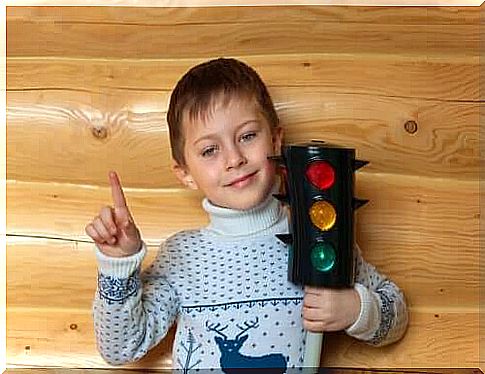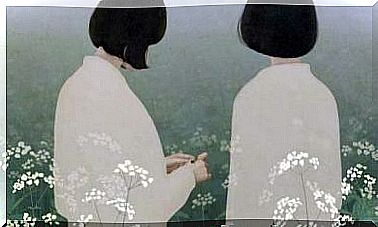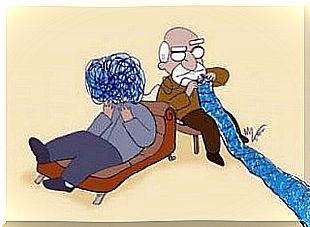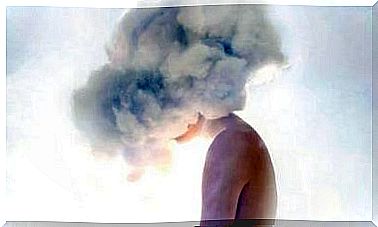The Traffic Light System For Anger Management

The traffic light system is a tool for children aged 4-10 to help them deal with their emotions. Children at that age can identify basic emotions but have difficulty managing them properly. The traffic light system uses a recognizable symbol, the classic traffic light, to teach children how to deal with their emotions.
Most children understand perfectly how a traffic light works because they encounter it every day, making it an ideal symbol for emotional control. Red means to stop, yellow-orange means to wait or slow down and green means to go.
If you apply traffic light colors to children’s anger, they learn to manage their emotions as if it were a game. That said, however, you may be wondering how to get a child to relate their emotions to a traffic light.
Well, if you want to use the traffic light system, you must first teach children to associate the colors of the traffic light with emotions and behavior. In this article we explain the function and reaction of each color.

Emotional self regulation
Why is it so important for children to control their emotions? Laura Chica, a psychologist and life coach, believes it is important to teach children emotional control and encourage self-awareness. She believes that they should learn to identify their own emotions and how to respond to them.
They also need to learn that their reactions will differ depending on their mood, and that they have the power to choose the right response to any situation.
A 2009 study by Pamela M. Cole highlights the importance of emotional self-regulation for little ones to prevent more serious conditions later in life.
Therefore, we would like to take a moment to emphasize the traffic light system. It’s a great example of a technique that can help children manage their emotions.
A team from the Department of Psychology and Neuroscience at Duke University also emphasizes the importance of emotional self-regulation for proper development. According to the study, people who don’t learn these skills as children are at risk for health problems later in life.
The traffic light system: what do the three colors mean?
Red
STOP, calm down. When you can’t control an emotion, especially anger, you have to stop just like you stop at a red light at an intersection. If you’re feeling overwhelmed with anger, you need to pause and think about what’s happening to you.
Yellow orange
THINK and dwell on the problem and how you feel. “How do I feel now?” “Am I angry?” or “Am I feeling sad?” Ask the child to think about the possible alternative reactions and consequences of the situation. What is the most appropriate response? What is the solution that offers the most benefits?

Green
TAKE ACTION, solve the problem. Once the child thinks about the possible ways to respond, it then chooses the best option. Then they run it to fix the problem they have. Reinforcing their positive responses is important for their learning process.
According to Skinner’s learning theory, positive reinforcement helps the child feel that their effort is valid and noticed. That encourages them to use the same behavioral patterns in the future.
In conclusion, emotional self-regulation is a fundamental skill to pass on to children. Adults should ensure that children are given the tools to deal with emotions such as anger, fear and frustration.
Given the importance of this skill, it’s great that there are tools like the traffic light system to help kids learn in a fun and accessible way.








